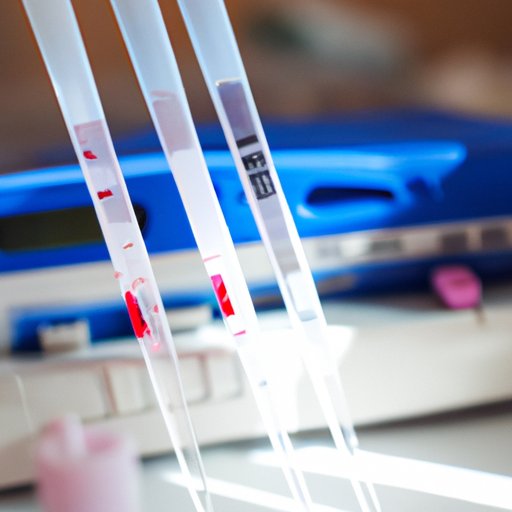
Introduction
A chemical stress test is a diagnostic tool that is used to evaluate heart function and diagnose heart conditions. It is a non-invasive procedure that involves injecting a chemical into your bloodstream to simulate the effects of exercise on your heart. In this article, we will explore how long a chemical stress test takes and provide you with a comprehensive guide to the test.
Understanding the process of a chemical stress test
During a chemical stress test, a small dose of a chemical called dobutamine is injected into your bloodstream. The dobutamine works to speed up your heart rate, simulating the effects of exercise. As your heart beats faster and harder, a medical professional will evaluate your heart function using ultrasound or electrocardiography (ECG). This procedure is commonly used in cases where exercise isn’t an option, such as if the patient has mobility issues.
The test breaks down into four parts: preparation, stress testing, rest period, and evaluation. First, the patient is prepared for the test, which can include screening for allergies or other issues that could interfere with the test. Then, the patient is injected with dobutamine and undergoes stress testing, followed by a rest period. Finally, the medical professional evaluates the results and assesses your heart’s health.
The entire procedure typically takes between 1-2 hours, including preparation time. However, the duration can vary depending on how long it takes for the medication to take effect on the patient.
Comparing timeframes
When compared to other heart tests, a chemical stress test takes less time to perform. A standard stress test, which involves using exercise to simulate heart stimulus, can take up to 2 hours, not including preparation time. Additionally, cardiac catheterization – a more invasive test that involves inserting a catheter into the heart – can take up to 6 hours.
Several factors can impact how long a chemical stress test takes, such as age, sex, and medical history. For example, older individuals may take to the medication more slowly, while those with high blood pressure may require extra supervision during the test. Medication interactions can also impact how long the test takes, as well as the patient’s overall physical condition.
Patient experience
While the test may be intimidating, it is generally well tolerated by patients. Most people do not experience any side effects, and those that do are minor and short-lived. Some patients report feeling a mild fluttering sensation in their chest, while others experience mild headaches or flushing during the procedure. However, these symptoms generally disappear after the test is over.
Patients who have undergone a chemical stress test generally have a positive experience. The test is considered relatively easy to perform, and most are discharged shortly after the evaluation is completed. Patients can expect to go home with a set of instructions to take home with them to guide them in their care.
The benefits of a chemical stress test
Chemical stress tests are an important diagnostic tool that can help identify various heart conditions. The test can detect coronary artery disease, heart failure, and other conditions that can impair heart function. This information can be valuable for medical professionals in determining how to treat the patient moving forward.
While a chemical stress test only takes a couple of hours, the results can be used by your physician for years to come to establish a medical history and to identify early indicators of heart trouble.
Technological advancements and duration of the test
Technology continues to play a significant role in the medical industry’s advancements, and the chemical stress test is no exception. With the introduction of newer and more efficient techniques, the duration of the procedure has decreased. The latest methods of performing a chemical stress test are far less time-intensive than the traditional methods.
Some technological advancements that have impacted the duration of a chemical stress test include new medical equipment, such as electromagnetic sensors that offer higher imaging resolution and faster data acquisition speeds. Medical professionals now can execute these tests so that they are quicker, just as accurate and more comfortable to the patient.
Conclusion
Chemical stress tests are an important tool in detecting various heart conditions, and while the duration of the test can vary, most patients can expect it to take between 1-2 hours to complete. The relatively fast procedure, combined with advances in medical technology, allows the test to identify heart trouble quickly and with minimal discomfort to the patient.
By undergoing a chemical stress test, individuals can take an active role in their heart health, ensuring that they receive the appropriate medical care moving forward.





